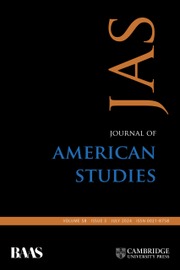In Discriminating Sex: White Leisure and the Making of the American “Oriental”, Amy Sueyoshi makes a number of fresh, intersectional and interdisciplinary interventions in urban and cultural history, and American, Asian American, and gender and sexuality studies. She also updates scholarly conversations in whiteness studies and American orientalism.
Sueyoshi's deconstruction of “freewheeling” (turns out it was not) San Francisco during the late nineteenth and early twentieth centuries is highly readable, teachable, and provocative.
Drawing on an eclectic collection of sources (cartoons, novels, short stories, theatre performances, court cases, popular songs and newspaper reports) Discriminating Sex, as Sueyoshi declares, “details how white middle-class cultural movements to forge gender and sexual fulfillment in turn-of-the-century San Francisco initially distinguished Chinese from Japanese and then discriminated against both communities in the cultivation of a pan-Asian American stereotype – a single image of the ‘Oriental’ laden with gender and sexual meaning” (2). As she tracks both the divergence and the convergence of the experiences of Chinese and Japanese immigrants across pivotal decades, Sueyoshi deftly plumbs the cultural-history archive weaving a narrative of how racialized and gendered notions of pleasure upheld white supremacy at the expense of people of color, particularly Japanese and Chinese Americans.
The book reveals San Francisco as central to the formation of American orientalism. Sueyoshi weaves demographic data into her analysis of cultural production, arguing that an initially small population of Chinese and Japanese immigrants were written into civic and then national consciousness via “the active imagination of [white] writers, illustrators, and actors who likely never had any meaningful interactions with Asians” (3). Seven chapters repeatedly yet variously make her point. In the first two chapters, Sueyoshi introduces us to a San Francisco that celebrated its openness but, ultimately, exploited and exoticized its nonwhite residents. My favorite chapter, chapter 3, “‘Deliver Me from the Brainy Woman’: The Modern Woman and the Geisha,” pinpoints the rise of Japanese geisha imagery in leisure culture. Lighting up dim corners of historical memory, Sueyoshi illustrates how Japanese women were pitted against European American women (the former being rendered more feminine and desirable as the latter claimed greater athletic and intellectual independence). Additionally, as Sueyoshi shows, this period would see the creation of what would become the enduring stereotype of the geisha in America, communicated via a range of media channels and spawning myriad tropes of Asian female exoticism that endure today.
Subsequent chapters on prostitution, masculinity, and fashion as masquerade continue to knock down the historical house of assumptions. Chapter 5, “Managing Masculinity: The Heathen, the Samurai, and the ‘Best Oriental’,” excavates polarized representations of Japanese men as embodying “feminine civility” and Chinese men as “degraded savages” at the moment when “middle-class whites sought to find balance between primal and over civilized masculinity” (11). But these tropes would flip and then converge into a homogenized and homoerotocized (or desexualized) “Asian male.” All of this, Sueyoshi notes, had more to do with white male anxiety than with any sort of reality.
The book concludes by weaving insights from the previous chapters into Sueyoshi's chapter 7: “‘Consciousness Aroused’: Gender and Sexual Disinterest and the Rise of the ‘Oriental’.” A decrease in sexualized and racialized imagery in the early years of twentieth-century San Francisco did not help Asian Americans. Instead, previously distinct representations converged and the depictions “formed the beginnings of a pan Asian American caricature, an ‘Oriental’ simultaneously geisha, prostitute, aesthete, pimp, samurai, and later homosexual in a single body.” In the end, “The making of the American ‘Oriental’ thus came about through a mishmash of gendered and sexualized racial representations deliberately and specifically born from white desire and pleasure” (12).
Some readers may be uncomfortable with Sueyoshi's capacious assumptions but she signposts methodological maneuvers throughout the book. For example, when she discusses newspaper articles and illustrations, she does not look for actual occurrences but rather historical traces of “contentions over shifting gender and sexual norms.” Sueyoshi pays rapt attention to the anxieties that manifest in the cultural archive; but at times the historical agency of her individual Chinese and Japanese subjects gets lost in her robust critique of white supremacy. Nonetheless, the big picture is a restoration of collective Asian American historical voice that amply fulfills Sueyoshi's own desire, articulated in her acknowledgements, that the book will “keep us mindful of how our own efforts to forge pleasure might disenfranchise others.”



